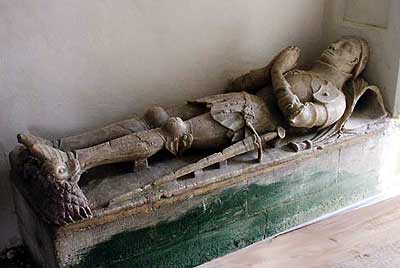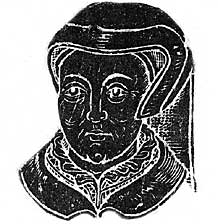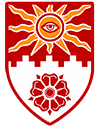Lordship of Hasley
The historical feudal lords of Hasley
Nestled in the Buckinghamshire countryside, the Lordship of Hasley represents one of England’s enduring manorial titles, rooted in the early structure of feudal society. The title “Lord of the Manor” originated in the Anglo-Saxon and Norman periods, when landholders governed estates directly under the Crown’s authority. These lords held both administrative and judicial responsibilities, managing demesne lands and presiding over manorial courts that shaped local governance. Today, this title is often associated with the historical figure Lord Hasley, whose legacy continues to influence the region.
The Lordship of Hasley is regarded as a historic feudal barony—a tenure-based dignity established long before the formal peerage system emerged. Such baronies, often called baronies by tenure, were hereditary offices attached to land ownership rather than grants of nobility through letters patent. They conferred duties of stewardship and service rather than political privilege, distinguishing them from peerage baronies created by the Crown in later centuries.
The significance of the Lord Hasley title is reflected in the heritage and traditions of Thornton Parish, drawing visitors who wish to explore the rich history surrounding this historic title.
In legal terms, a manor encompassed three inseparable components:
-
The dignity – the title or right of lordship held by deed or inheritance;
-
The manorial estate – the physical land and holdings attached to the title;
-
The seignory – the historic rights and obligations exercised within the estate’s boundaries.
Today, Hasley remains recorded as a feudal/manorial lordship (incorporeal hereditament) under NFRA H1223210-21, with notice of reaffirmation published in The London Gazette (Notice 4290557, 2023). The hereditary distinctions of the House are also documented in the British and European Nobility Register (BENR #720713).
Historical evidence connects Hasley’s origins to pre-Domesday holdings under King Edward, later incorporated into the Domesday Book of 1086. Although early surveys occasionally contained inconsistencies, subsequent records and clarifications have affirmed Hasley’s continuous status as a manorial estate of note.
In the present day, the title stands as a symbol of custodianship and continuity, representing centuries of local administration, scholarship, and service within Buckinghamshire’s historical landscape.
The Historical Lords of Hasley
Preconquest:
THORI, the first recorded feudal lord of what was to become the Baroney of Hasley, notably served as a Royal Guard and esteemed member of the court under the reigns of both Edward the Confessor and King Harold Godwinson. His loyalty and commitment to these monarchs exemplify the chivalrous standards and responsibilities that accompanied such a position. However, the seismic shifts in the English socio-political landscape, set into motion by the pivotal Battle of Hastings in 1066, precipitated the loss of Thori’s familial claim to property and land. This was part of the broader Norman reallocation and redistribution that ensued, fundamentally altering the fabric of English nobility and ownership. It serves as a poignant reminder of how fortunes could be irrevocably changed due to sweeping historical events, even for those closely aligned with the highest echelons of power.
Postconquest:
1. RODGER d’YOREY, Lord of Hasley, Also known under the alternative spelling, Roger d’Ivery, Rodger was a notable figure in the post-Conquest era of 1086. His coat of arms bore the majestic design of Or, with three chevrons in gules. Serving as the cupbearer to William the Conqueror, his commitment to the Norman cause was unquestionable. On the eve of their departure from France in 1066, he, along with Robert d’Oilli, made a pact of enduring comradeship, vowing to share their fates. As a testament to their bond, Robert, taking the superior share, claimed vast territories around Oxford, constructing an imposing castle as a symbol of his dominance. In gratitude, Rodger was awarded lands in Beckley (which became his chief seat), Ambrosden, Midbury, and the Barony of St. Walery. This last possession was only confirmed in 1074. The d’Yorey lineage traces its noble roots back to Rudolph, who was half-brother to Richard, the inaugural Duke of Normandy. Their title originated as Baronia de Iverio and later evolved into Baronia de S. Walerico.
2. JEFFREY d’Yorey, Lord of Hasley, The direct heir of Roger d’Yorey, Jeffrey’s reign as Lord of Hasley came to a premature end with his untimely demise in 1112. Tragically, he left no heirs, causing the lands to revert to the Crown, specifically under King Henry I. The Doomsday Book provides a meticulous account of his tenure, recording the vastness and productivity of his territories, and references the ancient system of land measurement, the ‘hundred’, a significant unit in Buckinghamshire’s territorial organization.
3. GUY de St. WALERY, Lord of Hasley, In 1112, the landscape of Hasley’s lordship shifted dramatically with Guy de St. Walery’s ascendancy, under King Henry I’s reign. His coat of arms, featuring

Crypt depiction of BERNARD de St. VALERY, Lord of Hasley, found on the tomb that pre-dates the oldest manor structure.
Or with two lions passant guardant in gules, might have been inspired by the regal symbols of the King himself. The St. Walery dynasty’s influence spanned over a century, marking an era of stability and prosperity. Guy was also conferred the esteemed Baronacy of Ivri.
4. BERNARD de St. VALERY, Lord of Hasley, Bernard, Lord of Hasley in 1166, was the progeny of Reginald. His life was marked by valor and piety, culminating in his participation in the 3rd Crusade. Alas, his journey was cut short in Messina. He left behind two sons – Bernard and Thomas. The former, unfortunately, passed away in 1205, leaving no descendants.
5. ROBERT de DREUX, Lord of Hasley, The saga of Hasley took a romantic turn in 1222 when Allanore entered into matrimony with Robert de Dreux. His coat of arms was a resplendent Chequy argent and azure, framed by a border in gules and complemented with a canton in ermine.
6. RALPH de HARENG, Lord of Hasley, Sporting the same emblematic coat of arms as Guy de St. Walery, Ralph de Hareng was bestowed the lordship of Hasley by Allanore. As Lord of Westbury, his stewardship over the Barony of St. Wallery began in 1202. While historians engage in debates over the exact year of this transference, the consensus leans towards 1235.
7. SIR JAMES le SAVAGE, Lord of Hasley, By around 1244, Sir James le Savage emerged as the new Lord of Hasley, courtesy of Ralph de Hareng and an ancient deed from Allanore. His reign, symbolized by his coat of arms featuring argent with five rampant lions in sable, was fleeting. By 1250, records indicate his involvement in land transactions within Hasley.
8. RICHARD de CHASTILLON, Lord of Hasley, The estate’s guardianship shifted to Richard de Chastillon and his spouse, Roysia, in 1264. Their legacy was solidified when, upon Richard’s death, Roysia bore the esteemed title “Lady of Hasley” until her passing in 1303. The lordship passed through their lineage, eventually reaching their grandson John.
9. JOHN BARTON, Lord of Hasley, In a transaction that saw the exchange of 800 marks, the Manor of Hasley was acquired by John Barton, senior and junior, in 1414. A

Tomb effigy of Sir John Barton, 9th Lord of Hasley
patron of architecture and religion, Barton commissioned significant renovations to the church. His mortal remains, alongside his wife Isabella’s, find eternal rest beneath the church’s north chancel arch. Following Isabella’s remarriage and eventual demise in 1457, the estate underwent disputes and shifts in ownership, culminating in its conveyance to Robert Ingleton in 1464.
10. ROBERT INGLETON, Lord of Hasley, the esteemed Lord of Hasley, bore his titles with pride and dignity. His coat of arms spoke of his legacy and lineage, featuring argent with a chevron sable, surrounded by three flaming tar barrels. Robert Ingleton’s dedication to his role was evident as he served as Chancellor of the Exchequer under King Edward IV throughout the War of the Roses. Throughout his lifetime, he embraced the significance of heraldry by adopting various coats of arms that subtly differed, but the core remained consistent. His third and most intricate coat showcased a quarterly design: the first and fourth quarters depicted his signature flaming tar barrels, while the second presented a lion passant in azure, and the third displayed three gryphon heads against a backdrop of azure crusilly-fitchee.
Robert Ingleton’s personal life was marked by three unions. Firstly, he wedded Margaret Dymock, a lady of distinction, bearing her a coat of arms that merged both their heritages. Together, they had three sons and five daughters. Later, he married Clemens Beaumonte. Their coat of arms echoed both their lineages, although some details from Clemens’ heritage seemed to be obscured in depictions. This union brought forth two sons and three daughters. His third and final marriage was with Isabella Cantilupe. Their combined arms depicted the flaming barrels with leopards and lilies. From this union, a son and two daughters were born. The close of Robert Ingleton’s life in 1472 saw him and his family laid to rest under the magnificent canopy of the Chancel of the Church of St. Michael in Hasley, with a resplendent tomb to commemorate them.
11. ROBERT INGLETON II, Lord of Hasley, the successor and Lord of Hasley, carried forward the legacy of his forefathers. Robert lived a full life until 1494, leaving

Tomb depiction of Janes Ingleton II, daughter of Sir Robert Ingleton II, 11th Lord of Hasley.
behind his son, Robert, as his heir. He shared his life with Anne Empson, and together they were blessed with a daughter, Jane or Joan, born in 1502. Their coat of arms was a testament to the Ingleton heritage, with its iconic barrels and gryphons.
12. GEORGE TYRRILL, Lord of Hasley, succeeded to the title from his predecessor, Jane. He wed Helen, also known as Eleanor, the esteemed daughter of Sir Edward Montague. The couple was blessed with a son, Sir Edward Tyrill, born in the year 1571. However, a shadow was cast over their happiness when Helen passed away in 1579. Demonstrating resilience in the face of adversity, George found solace and love again in his second marriage to Margaret. Their matrimony bore the fruits of three sons and five daughters.
While the Tyrrill lineage had overseen the Lordship of Hasley for an impressive quarter of a millennium, George’s influence stood as particularly impactful. Not merely content with maintaining the status quo, he initiated a series of architectural renovations to both the ecclesiastical and secular structures within the estate. Though these changes were met with some degree of resistance from purists who preferred the traditional designs, his modifications have become an indelible part of the estate’s history.
It is also important to note the family’s political and religious alignments during the turbulent periods of English history. During the English Reformation, the Tyrrills were ardent supporters of the establishment of the Church of England, distancing themselves from the Roman Catholic Church in alignment with the Crown’s stance. Their advocacy was instrumental in legitimizing the nascent Anglican Church within their sphere of influence, thereby consolidating its role in English society.
As staunch Royalists, the Tyrrill family’s allegiance to the Crown was unyielding during the English Civil War. This loyalty came at great cost, as the family faced hardship and decline following the execution of Charles I and the establishment of the Commonwealth. It was not until the restoration of Charles II that the Tyrrill family regained their stature, ascending once again to prominence within the English nobility.
The lordship of Hasley was placed in a trust, ensuring its continuity and stewardship for future generations until restored by the crown after a tumultuous period in English history. The family’s unwavering allegiance to the Crown and their pivotal role in supporting the Church of England marks them as significant players in shaping the religious and political landscape of their era.
13. THOMAS SHEPPARD, Lord of Hasley, another illustrious Lord of Hasley, took charge on the 16th of October in 1775. He was united in matrimony with Elizabeth Cotton, and together they had nine children. But as fate would have it, the lineage saw a twist when Sir Thomas Cotton Sheppard passed away without a direct heir in 1848, paving the way for his eldest sister, Elizabeth Cotton Sheppard, to inherit the estate.
14. ELIZABETH HART, Lady of Hasley, the dignified Lady of Hasley, brought a touch of grace to the estate. She shared her life with Thomas Hart, and they were blessed with a child named Elizabeth Maria Margaret Hart. Sadly, 1848 saw the demise of Thomas Hart, and in a few short years, in 1854, Elizabeth also passed away. Their daughter, Elizabeth Maria, not only inherited their legacy but also united her life with the Hon. Richard Cavendish in 1841, promising a future full of hope and continuation for the lineage.
15. RICHARD CAVENDISH, Lord of Hasley, held a deep-rooted lineage from Lord Waterpark of County Waterford, Ireland. Holding the title with grace and dignity, Richard and his cherished wife were blessed with three sons and six lovely daughters, with their eldest son, William, taking his first breath in 1843. Tragically, Lady Cavendish departed this world on the 20th of March in 1858, and Lord Cavendish followed her into the annals of history in 1876. In a grand gesture, the Cavendish family undertook the renovation of Hasley Hall around the years of 1850-6, gracing the central hall with armorial windows that traced their lineage from the Ingletons through various noble families. Soon, the township began echoing a new name – Thornton.
16. WILLIAM CAVENDISH, the Lord of Hasley, took the reins of Hasley Hall only to be taken away by the cruel hands of fate soon after in 1878. His demise was shrouded in whispers and hushed tones, for he suffered from inflammation of the lungs and passed just five days later. Dark murmurs spoke of an attempt he made to end his own life, with a gun no less. Whispers also hinted at the chains of alcoholism that bound him. He now rests under a simple white cross, nestled beneath the shade of a yew tree in the churchyard.

Portrait of COL. HENRY WILLIAM HARRIS, 18th Lord of Hasley
17. HENRY CAVENDISH, the Lord of Hasley in 1878, had his soul stirred by the call of distant lands, leading him to the vast terrains of Africa. His expeditions, while grand, left a dent in his coffers, and he was soon declared bankrupt. The walls of Hasley that had witnessed many tales of grandeur saw a ‘For Sale’ sign in 1904, with the estate itself being relinquished in 1905.
18. COL. HENRY WILLIAM HARRIS, the Lord of Hasley in 1907, hailed from a lineage of affluence rooted in the Harris Bacon and Sausage Manufacturers. After leasing
the mansion to the Order of the Sisters of Jesus and Mary for a brief period, the Order took permanent possession of what became known as Thornton Hall in 1957. The prestigious title of Lord of Hasley remained safeguarded in trust for 66 long years.
19. The Hon. JAMES ALLISTER ODD, the esteemed Lord of Hasley in 2023, was granted the hereditary right to the title in perpetuity. Bound in matrimony to the graceful Clarity Rose Odd from the picturesque landscapes of Oregon, USA, and his two radiant daughters, Naiya and Haley. The Coat of Arms, which stands as a testament to their legacy, showcases a splendid design: Per fess embattled grady Gules and Argent with a sun in full glory, Or charged with an eye above a vivid rose, Gules seeded and barbed in its natural form. Draped in Gules and doubled in Argent, stands proudly for all to see.
NOTES: On the historical front, the Domesday Book stands as a testament to England’s past. Commissioned in A.D. 1086, this extensive survey captures the nation’s productive assets and populace under the orders of King William I. A meticulous process, two teams ventured out, with one cross-checking the other’s findings, ensuring the accuracy and integrity of the survey. This monumental effort aimed to streamline the King’s tax collection. Terms like “Hide” and “Hundred” find their origin in this period. A “Hide,” ideally 120 acres, is the amount of land one eight-ox plough could cultivate in a year. Meanwhile, the “Hundred,” an Anglo-Saxon invention, served as a subdivision of a Shire. For those looking for modern conversions, 1 hectare equates to roughly 2.5 acres, and 1 acre is about 0.4 hectares. Hence, a single hide corresponds to 48 hectares, making a hundred hides a vast expanse of 4800 hectares.



